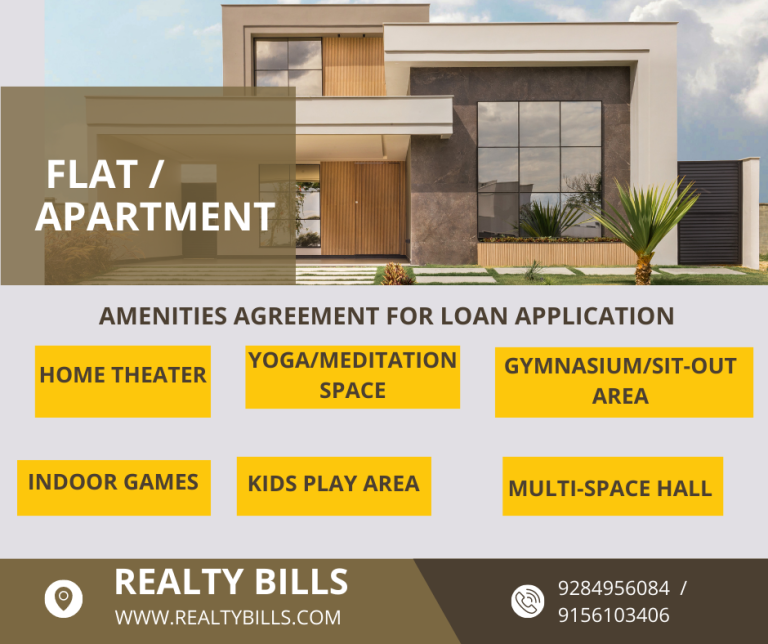Real Estate Insights From Property Areas to Common Spaces
Real Estate Insights From Property Areas to Common Spaces












1. Total Area of Land:
Definition: The total area of land is the entire area of the plot or property on which construction is planned.
Explanation: It serves as the foundational measurement for any construction project, determining the available space for development.
2. Less Tangent:
Definition: Tangent refers to areas of the land that cannot be used for construction due to irregular shapes, encumbrances, or restrictions.
Explanation: Subtracting the tangent area from the total land area gives you the net usable land area for development.
3. Net Plot Area:
Definition: Net plot area is the remaining land area after deducting the tangent area. It’s the actual area available for construction.
Explanation: It sets the stage for calculating construction-related parameters and potential building size.
4. Additional P.P.FSI on Plot Area:
Definition: P.P.FSI, or Permissible Floor Space Index, is the maximum allowable built-up area on a plot. Additional P.P.FSI represents an extra allowance granted on top of the standard permissible FSI.
Explanation: This additional allowance allows for more construction beyond what the standard regulations permit.
5. Permissible FSI:
Definition: Permissible FSI is the maximum Floor Space Index allowed for construction on a given plot according to local zoning and building regulations.
Explanation: It determines the extent of construction allowed on the land within regulatory limits.
6. Permissible Built-up Area:
Definition: Permissible built-up area is the maximum built-up area allowed on the plot, considering the permissible FSI.
Explanation: It defines the extent of construction that adheres to local zoning laws.
7. Proposed Built-up Area on Ground Floor:
Definition: This is the planned built-up area on the ground floor of the building.
Explanation: It outlines the initial layout and design for the building’s ground floor.
8. Proposed Built-up Area on First Floor:
Definition: This represents the planned built-up area on the first floor of the building.
Explanation: It contributes to the overall design and space allocation within the building.
9. Net Built-up on Second to Eighth Floor:
Definition: Net built-up area on the second to eighth floors represents the usable built-up space on these floors.
Explanation: It is essential for planning and allocating space within the building.
10. Total Net Built-up Area on All Floors:
– Definition: This is the cumulative net built-up area on all floors, ensuring an understanding of the total usable space within the building.
– Explanation: It defines the complete built-up area available for various purposes in the building.
11. Total Proposed Built-up Area on All Floors:
– Definition: This represents the total planned built-up area for all floors of the building.
– Explanation: It offers an overview of the project’s scope and scale.
12. Typical Floor Area:
– Definition: Typical floor area refers to the space allocated on each floor, which is generally uniform for all floors in a multi-story building.
– Explanation: It helps in understanding the consistency of floor layouts within the building.
13. Typical Refuge Area:
– Definition: Typical refuge area refers to designated safe zones within the building that occupants can use during emergencies.
– Explanation: Standardizing refuge areas ensures safety and compliance with building codes.
14. Refuge Area:
– Definition: Refuge areas are safe zones within the building designed to protect occupants during emergencies such as fires or earthquakes.
– Explanation: They are crucial for ensuring the safety and well-being of building occupants during critical situations.
15. Recreation Floor:
– Definition: A recreation floor is a designated level within the building dedicated to amenities and leisure spaces for residents.
– Explanation: This floor provides recreational options, enhancing the quality of life within the building.
16. Premium Areas:
– Definition: Premium areas may refer to spaces within the building known for their exclusivity or higher value, such as penthouses or luxury suites.
– Explanation: These areas often command premium prices due to their unique features and desirability.
17. P-Line Area:
– Definition: The P-Line area typically represents the front or prominent areas of a building, often facing a street or a prime location.
– Explanation: P-Line areas are crucial for curb appeal and may be of particular interest to commercial or retail establishments.
Understanding these terms is essential for developers, architects, and individuals involved in construction and real estate. They are fundamental in project planning, compliance with regulations, and the overall design and layout of buildings.
Real Estate Insights From Property Areas to Common Spaces
let’s delve into the details of the terms related to plot area, FSI (Floor Space Index), TDR (Transfer of Development Rights), and their implications on total FSI and ancillary FSI:
1. Plot Area:
Definition: The plot area is the total land area on which a construction project is planned. It is usually measured in square meters or square feet.
Explanation: The plot area serves as the foundational measurement for determining how much construction can take place on a given piece of land. It’s the starting point for calculating various construction-related parameters.
2. Basic FSI (Floor Space Index):
Definition: Basic FSI, also known as Floor Area Ratio (FAR) or Floor Space Index (FSI), represents the ratio of the total built-up area of all floors of a building to the total plot area. It determines the maximum permissible built-up area on a given plot.
Explanation: If the basic FSI for a plot is 2, it means that for every square meter of the plot area, you can construct up to 2 square meters of built-up space. Basic FSI regulations are set by local authorities and zoning laws.
3. PPFSI (Permissible FSI):
Definition: PPFSI, or Permissible FSI, is the actual FSI allowed for construction on a specific plot as per local zoning laws, regulations, and planning permissions.
Explanation: PPFSI can vary from one plot to another based on the location, land use, and local regulations. It’s crucial to understand the PPFSI for your plot before planning any construction.
4. TDR (Transfer of Development Rights):
Definition: TDR is a mechanism that allows property owners to transfer their development rights from one location (the donor site) to another (the recipient site). It typically occurs in cases where development is restricted on the donor site but allowed on the recipient site.
Explanation: TDR allows for the redistribution of development potential within a city or region. It can increase the FSI on the recipient site beyond what is typically allowed, subject to certain conditions and regulations.
5. Total FSI:
Definition: Total FSI represents the cumulative FSI allowed for a construction project on a specific plot. It includes both the basic FSI and any additional FSI obtained through mechanisms like TDR.
Explanation: Total FSI determines the maximum permissible built-up area for a project, considering both the base FSI and any additional development rights or incentives provided by local authorities.
6. Ancillary FSI:
Definition: Ancillary FSI is an additional FSI allowance typically granted for specific purposes, such as amenities, parking, or green spaces, to enhance the overall quality of a development project.
Explanation: Ancillary FSI is often used to incentivize developers to include essential features that benefit residents and the community, such as parks, recreational areas, or adequate parking facilities.
7. Total:
Explanation: The term “Total” in this context represents the sum of the various FSI components (basic FSI, additional FSI from TDR, ancillary FSI, etc.) allowed for a specific construction project. It defines the comprehensive scope of development within the project.
Real Estate Insights From Property Areas to Common Spaces
1. Toilets:
Purpose: Common toilets are typically provided on each floor for the convenience of residents and visitors.
Usage: These facilities cater to basic sanitation needs and are essential for multi-story buildings to reduce the need to travel to lower floors for restroom breaks.
2. Non-Approachable Terrace:
Purpose: The non-approachable terrace is a restricted area, often used for utility installations, such as water tanks, solar panels, or HVAC systems.
Usage: Access to this area is usually limited to maintenance personnel for servicing equipment.
3. Refuge Area:
Purpose: Refuge areas are designed as safe zones within the building where occupants can seek shelter during emergencies like fires or earthquakes.
Usage: These areas are equipped with fire-resistant materials, ventilation, and communication systems to ensure safety during critical situations.
4. Passage Area:
Purpose: Passage areas are corridors or hallways connecting different parts of the building, facilitating movement between units and common facilities.
Usage: Residents and visitors use these spaces for accessing elevators, stairs, and other amenities.
5. Fire Staircase & Fire Lift:
Purpose: These dedicated fire safety features are crucial for swift evacuation during emergencies.
Usage: In the event of a fire, these staircases and lifts provide a safe and quick means of exiting the building.
6. Main Staircase with Lobby:
Purpose: The main staircase is an integral part of the building’s design, providing access to all floors. The lobby is the transitional area between the common areas and individual units.
Usage: Residents and guests use the main staircase and lobby for regular access to their units.
7. Parking:
Purpose: Parking areas within the building or on the premises are essential for residents and visitors to securely park their vehicles.
Usage: Residents use these parking spaces for their vehicles’ safety and convenience.
8. Recreational Area:
Purpose: Recreational areas offer spaces for leisure and community activities.
Usage: Residents can use these areas for fitness, relaxation, socializing, or various recreational activities.
Real Estate Insights From Property Areas to Common Spaces
1. Carpet Area:
Carpet area refers to the actual usable area within the walls of an apartment or property, where you can place your carpet. It does not include the thickness of the inner walls. Carpet area is the most critical measurement for a buyer as it determines the actual living space.
Formula for Carpet Area:
Carpet Area = Length (in feet) x Width (in feet)
2. RERA Carpet Area:
This is the carpet area as defined by the Real Estate Regulatory Authority (RERA) in India. It is used to provide transparency in property transactions and ensure that buyers get the actual area they pay for.
3. Enclosed Balcony:
Enclosed balcony refers to any balcony or outdoor space that has been enclosed or integrated into the main living area, effectively increasing the carpet area.
4. Balcony and Terrace:
Balcony and terrace area includes all outdoor spaces attached to the apartment, such as open balconies and terraces. This area is usually not considered in carpet area calculations.
5. Service Ledge:
Service ledge area is the space used for the installation of utilities like air conditioning units or storage, often located outside the main living area.
6. Total Usable Area:
Total usable area is the sum of the carpet area and any enclosed balconies, balcony and terrace areas, and service ledge areas.
7. Built-up Area:
Built-up area is the carpet area plus the area occupied by the thickness of the walls. It represents the total area covered by the walls, including the carpet area.
Formula for Built-up Area:
Built-up Area = Carpet Area + Wall Area
8. Net Built-up Area:
Net built-up area is the built-up area minus any enclosed balconies or service ledge areas.
9. Common Area Loading:
Common area loading includes spaces shared by all residents of a building, such as corridors, staircases, parking areas, and recreational areas. These areas are not included in individual apartment measurements.
10. Super Built-up Area:
Super built-up area is the total area, including the carpet area, built-up area, and a portion of the common area loading. It is often used for pricing purposes in real estate advertisements.
Formula for Super Built-up Area:
Super Built-up Area = Built-up Area + (Common Area Loading x Loading Ratio)
Loading Ratio of Carpet/Super Built-up:
The loading ratio is used to allocate a portion of the common area loading to each individual apartment. It is typically expressed as a percentage.
Formulas for Loading Ratio Calculation:
As Actuals: Loading Ratio = (Actual Common Area Loading Area / Total Number of Apartments) x 100
According to 65%: Loading Ratio = 65%
In India, it is common for builders and construction companies to use these measurements and formulas to calculate and advertise the different areas of a property accurately. Buyers should always check these measurements and ratios to ensure they are getting the space they expect and are paying for. Moreover, it is essential to verify that these calculations comply with local RERA regulations, which may vary from state to state in India.
Real Estate Insights From Property Areas to Common Spaces
Real Estate Insights From Property Areas to Common Spaces
frequently asked questions (FAQs) on property measurements, common areas, FSI, and TDR:
Property Measurements FAQs:
What is the significance of carpet area in real estate?
- Answer: Carpet area is significant in real estate because it represents the actual usable living space within a property. It directly impacts the pricing and functionality of a property, making it a crucial factor for both buyers and builders.
How is the carpet area different from the built-up area?
- Answer: Carpet area is the actual floor area within the walls of a property, excluding any walls or common areas. In contrast, the built-up area includes the carpet area plus the thickness of the walls. Built-up area accounts for the total area covered by walls, including the carpeted space.
Can you explain the concept of RERA carpet area?
- Answer: RERA (Real Estate Regulatory Authority) carpet area is a standardized carpet area definition introduced by the Indian government to enhance transparency in property transactions. It ensures uniformity in carpet area calculations across projects, benefiting buyers by providing accurate and comparable measurements.
What are enclosed balconies, and do they contribute to carpet area?
- Answer: Enclosed balconies are outdoor spaces that have been enclosed or integrated into the main living area of a property. In many cases, they do contribute to the carpet area as they become a part of the indoor living space once enclosed.
How do I calculate the total usable area of a property?
- Answer: To calculate the total usable area of a property, add the carpet area to any enclosed balconies, balcony and terrace areas, and service ledge areas. This sum represents the complete functional space within the apartment.
What is meant by built-up area in real estate?
- Answer: Built-up area includes the carpet area plus the additional space occupied by the thickness of the walls. It represents the total area covered by walls, including the carpeted space. Built-up area is used for construction and pricing calculations.
What is the formula to calculate built-up area?
- Answer: The formula for calculating built-up area is: Built-up Area = Carpet Area + Wall Area
What is the net built-up area, and why is it important?
- Answer: Net built-up area is the built-up area minus any enclosed balconies or service ledge areas. It provides a more accurate representation of the indoor living space and is essential for space planning and pricing.
How does the loading ratio affect the super built-up area?
- Answer: The loading ratio determines how much of the common area loading (spaces like corridors, staircases, etc.) is allocated to each individual apartment. It affects the calculation of the super built-up area, with a higher loading ratio resulting in a larger super built-up area.
What is the loading ratio, and how can it be determined?
- Answer: The loading ratio is expressed as a percentage and can be determined based on actual measurements or set at a fixed percentage (e.g., 65%). It allocates a portion of the common area loading to each individual apartment, influencing the super built-up area calculation.
Common Area FAQs:
What are common areas in a building, and why are they important?
- Answer: Common areas in a building are shared spaces used by all residents. They are important for functionality, safety, and the overall living experience. Examples include corridors, staircases, and parking areas.
How are common areas like fire staircases and parking calculated?
- Answer: Common areas like fire staircases and parking areas are typically allocated based on building codes and regulations. The size and location are determined to meet safety standards and provide convenience for residents.
What is the purpose of a refuge area in a building?
- Answer: A refuge area serves as a safe zone within a building where occupants can seek shelter during emergencies like fires or earthquakes. It is designed with fire-resistant materials and safety features to protect occupants.
Why is there a need for passage areas in multi-story buildings?
- Answer: Passage areas in multi-story buildings are essential for facilitating movement between units and common facilities. They provide access to elevators, stairs, and other amenities, ensuring smooth circulation within the building.
What distinguishes a fire staircase from a regular one?
- Answer: A fire staircase is specially designed for use during emergencies, such as fires. It includes fire-resistant materials, proper ventilation, and safety features to provide a safe exit route in case of a fire.
How do builders allocate common area loading among residents?
- Answer: Common area loading is typically allocated based on various factors, including the size of individual units and local regulations. Builders aim for equitable distribution to ensure fairness among residents.
What are the main functions of a building lobby?
- Answer: The building lobby serves as a transitional area between common areas and individual units. Its main functions include providing a welcoming entrance, security, and access to elevators and common facilities.
Why is recreational area important in residential buildings?
- Answer: Recreational areas provide residents with spaces for leisure, fitness, and social activities. They enhance the overall quality of life within the building and contribute to a sense of community.
Can you explain the concept of non-approachable terraces?
- Answer: Non-approachable terraces are outdoor spaces that cannot be accessed or used by residents. They are often reserved for utility installations like water tanks or HVAC systems.
How is the common area loading in a building typically distributed?
- Answer: Common area loading is usually distributed among all residents based on factors like the size of their units or the number of occupants. The distribution is done to allocate maintenance and operational costs fairly.
Plot Area, FSI, and TDR FAQs:
What is the plot area in real estate, and why is it important?
- Answer: The plot area is the total land area on which a construction project is planned. It is essential as it serves as the foundational measurement for determining how much construction can take place on the land.
What is TDR (Transfer of Development Rights), and how does it work?
- Answer: TDR is a mechanism allowing property owners to transfer development rights from one location (donor site) to another (recipient site). It typically occurs when development is restricted on the donor site but allowed on the recipient site, promoting balanced urban development.
How is the permissible FSI determined for a plot?
- Answer: The permissible FSI is determined by local zoning and building regulations. It sets the maximum allowable floor space index for construction on a given plot based on factors like location, land use, and regulations.
What is the difference between basic FSI and additional P.P.FSI?
- Answer: Basic FSI represents the standard permissible floor space index for a plot. Additional P.P.FSI is extra FSI granted, often through incentives or regulations, allowing for increased construction beyond the basic FSI.
How does the additional P.P.FSI affect the total FSI for a project?
- Answer: Additional P.P.FSI increases the total FSI allowed for a construction project. It allows for more built-up area than the basic FSI and is subject to specific conditions and regulations.
What is the permissible built-up area, and why is it significant?
- Answer: Permissible built-up area is the maximum allowable built-up area on a plot, considering the permissible FSI. It is significant as it defines the extent of construction allowed on the land within regulatory limits.
How can I calculate the total built-up area for a project?
- Answer: The total built-up area for a project is calculated by multiplying the permissible FSI with the plot area. It represents the complete built-up space allowed on the land.
What are premium areas in a building, and why are they valued differently?
- Answer: Premium areas are spaces within a building known for their exclusivity or higher value, such as penthouses or luxury suites. They are valued differently because they offer unique features and desirability, often commanding higher prices.
What is the purpose of the P-Line area in a building?
- Answer: The P-Line area represents the front or prominent areas of a building, often facing a street or prime location. It is crucial for curb appeal and may be of particular interest to commercial or retail establishments.
How do I ensure compliance with FSI regulations when planning a construction project?
- Answer: To ensure compliance with FSI regulations, consult with local authorities, review zoning laws, and work with architects and planners experienced in the area. Accurate measurements and adherence to regulations are essential for compliance.